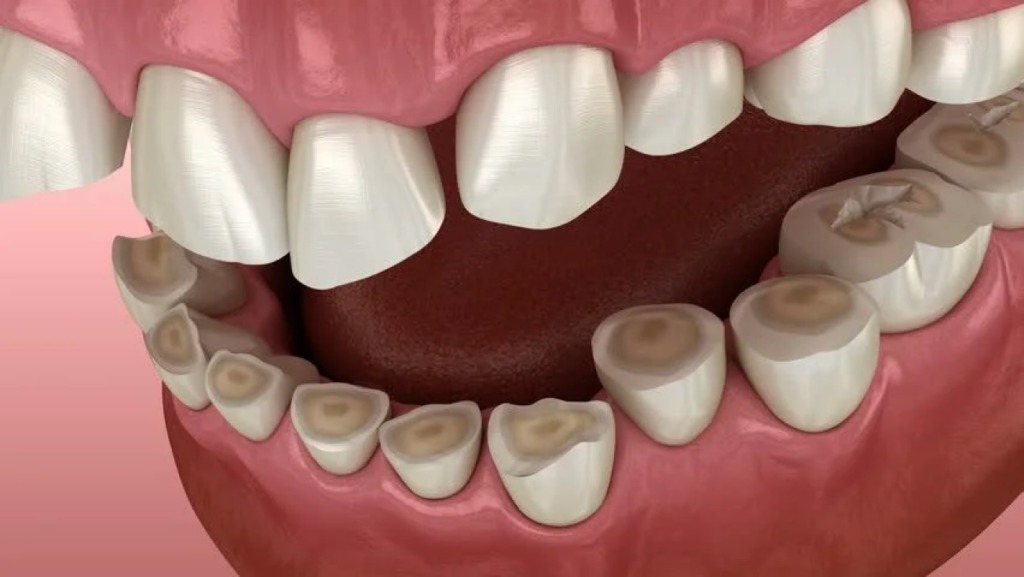Bruxism and Bite Splints: What’s the Difference Between a Michigan Splint and a Nightguard?
Dr. Hussam Al Nasrallah

Waking up with jaw pain, headaches, or worn-down teeth? You might be experiencing bruxism—a condition where you unconsciously grind or clench your teeth, especially during sleep. Bruxism is very common, yet many people don’t realize they have it until the damage is already done.
The good news? Dentists have tools to protect your teeth and relieve symptoms—most commonly bite splints or night guards. But not all mouthguards are created equal. One of the most effective types is the Michigan splint, which is often confused with standard night guards. Here’s what you need to know.
What Is Bruxism?
Bruxism is the involuntary grinding or clenching of teeth—usually during sleep (sleep bruxism), but sometimes during the day (awake bruxism).

Common symptoms:
- Jaw or facial pain
- Headaches, especially in the morning
- Tooth sensitivity or damage
- Flattened, chipped, or worn teeth
- Clicking or popping sounds in the jaw (TMJ dysfunction)
How Can Bite Splints Help?
Bite splints—also called occlusal splints or nightguards—are custom-made acrylic appliances worn over the teeth to:
- Protect enamel from wear
- Reduce muscle tension and clenching forces
- Stabilize the jaw joint (TMJ) and improve bite alignment
There are different types of splints, and choosing the right one depends on the severity and underlying cause of your bruxism.
Michigan Splint vs. Nightguard: What’s the Difference?
While both devices protect the teeth, a Michigan splint is more specialized and provides additional therapeutic benefits.
Michigan Splint
- Material: Hard, clear acrylic
- Design: Covers all upper teeth with flat occlusal (biting) surfaces and carefully adjusted contact points with the lower teeth.
- Made by: A dental lab using detailed bite records and jaw analysis.
- Purpose: Designed for moderate to severe bruxism, TMJ disorders, and muscle pain. It helps to:
- Deprogram overactive jaw muscles
- Stabilize the bite
- Allow the jaw to settle into a relaxed position
- Key Feature: Precisely balanced for even contact, reducing strain on the jaw and muscles
Standard Nightguard
- Material: Soft, hard, or dual-layer (soft inside, hard outside)
- Design: Often less detailed fit; may cover upper or lower teeth
- Made by: Custom-made by a dentist or purchased over the counter
- Purpose: Mainly for mild to moderate bruxism.
- Protects teeth from wear
- Provides less control over bite forces and muscle relaxation
- Key Feature: Offers cushioning but has less therapeutic effect on jaw muscles or the TMJ.
So Which One Do You Need?
| Condition | Recommended Device |
|---|---|
| Mild bruxism (no jaw pain, just wear) | Nightguard (custom is best) |
| Moderate to severe bruxism | Michigan splint |
| TMJ dysfunction or jaw muscle pain | Michigan splint |
| Cost-sensitive option for mild symptoms | Standard nightguard (preferably custom-fit) |
Why Custom Fit Matters
Whether it’s a Michigan splint or a night guard, a custom-fit device made by your dentist is far superior to over-the-counter options. Poorly fitting guards can worsen bruxism, cause uneven pressure, and irritate the gums.
Final Thoughts
If you’re waking up with sore jaws or grinding your teeth without realizing it, you’re not alone—and you don’t have to live with it. Bruxism is manageable, and the right dental splint can provide relief, prevent damage, and protect your long-term oral health. The key is choosing the right tool for your specific needs. For mild symptoms, a night guard might suffice. But if you’re experiencing more significant discomfort or TMJ issues, a Michigan splint could be a game changer.
Talk to your dentist about which option is best for you—they can evaluate your bite, symptoms, and muscle activity to recommend the most effective treatment.